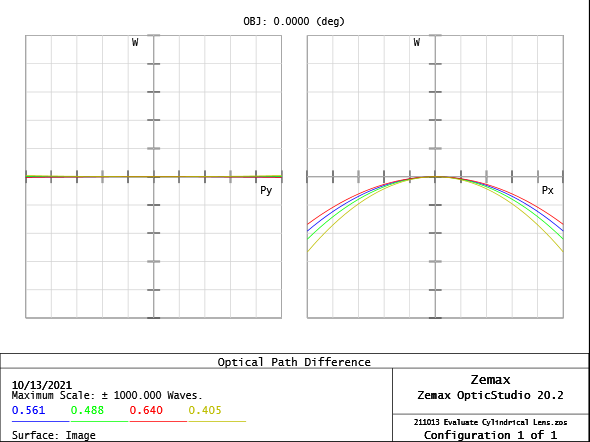I don’t see any tools to evaluate a line focus…
- OPD fan requires scaling both X and Y fans. The scale cannot be changed to “zoom in” on the OPD for the focus axis.

- FFT PSF won’t work either b/c it operates on the 2D WFE at the pupil
- Huygens suffers from the same limitations as the FFT PSF
The best I can do right now is extract the OPD from the text of the OPD fan. I can then evaluate the RMS WFE and even FFT it myself to produce an aberrated PSF.
Is there a better way?





